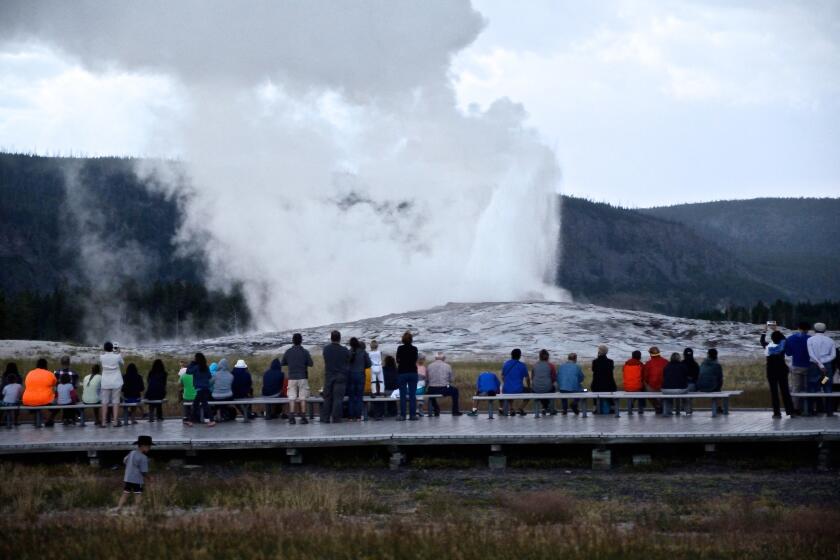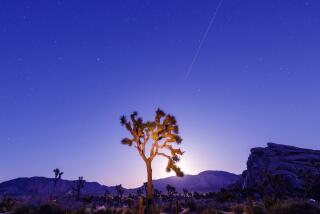Stargazing in your backyard is easy with these apps and gear
Night sky gazing is something we can all do from our backyards or local park. But what gear can help you find Venus or even the man-made International Space Station when you look to the heavens?
“Before going out and investing [in gear], get really familiar with the sky,” said astronomer Eric McLaughlin of the Rancho Mirage Library and Observatory in Rancho Mirage. “You don’t want to buy a car if you don’t have a road map.”
Cool webcams, like the one showing Old Faithful eruptions in Yellowstone, let you visit national parks from home.
Binoculars
Start by digging out binoculars or a spotting scope you may already have at home. Even a basic 10x25 set will do. The first number refers to the magnification level, the second to the diameter of the lens and the amount of light it lets in. The higher the second number, the more detail you’ll see — and the heavier the binoculars will be.
On a clear night, you should be able to see the moon and some of its craters with the naked eye. Look through your binoculars or a spotting scope and “you’d be surprised at the amount of detail you can see inside the craters,” said Lance Lucero, product manager in the astronomy division at telescope maker Celestron.
Space.com recommends these binoculars for night-sky viewing: Celestron SkyMaster Giant, 15x70 ($84 at celestron.com); Orion 20x80 Astronomy Binoculars ($139.99); and Celestron Cometron 7x50, good for kids ($36.95). Check for Space.com’s full list.
Telescopes
Lots of beginner telescopes are available for less than $100; many beginner scopes are good for children. Planets.org recommends Celestron’s Cometron FirstScope, which is lightweight and easy to use ($59.95). Other recommendations include AW 70 mm Astronomical Refractor Telescope ($49.95 on Amazon.com) and ExploraScope 114AZ Reflector by Celestron ($149.99)
Sky resources
“Sky Atlas for Small Telescopes and Binoculars” by Billie and David Chandler. Good beginner’s guide to what you can see in the night sky with binoculars or the naked eye. $13.50, davidchandler.com
Stellarium is a free online map of the sky that you can filter for your area. Set it on “Los Angeles” and you’ll learn how to find Venus and other planets and stars.
Celestron SkyPortal app. Point your phone at the sky and the app will explain what you’re seeing. Super easy to use, and it’s free.
The sky above is filled with wonders; you have only to leave your house and look up to see stars, planets, the moon and so much more. Here’s how to get started.
If you want to track the International Space Station, the ISS on Live app (Google) or ISS Finder (Apple) will tell you when it will be overhead. Type in your ZIP Code and the website will give satellite predictions and other astronomical data customized for your location.
Also, nasa.gov offers fresh information on U.S. efforts in space as well as all sorts of educational content and an image of the day.
At skyandtelescope.org. you’ll find breaking celestial news, along with telescope tips, do-it-yourself astronomy ideas and lessons in astrophotography. The website is part of the American Astronomical Society.
More to Read
Sign up for The Wild
We’ll help you find the best places to hike, bike and run, as well as the perfect silent spots for meditation and yoga.
You may occasionally receive promotional content from the Los Angeles Times.










